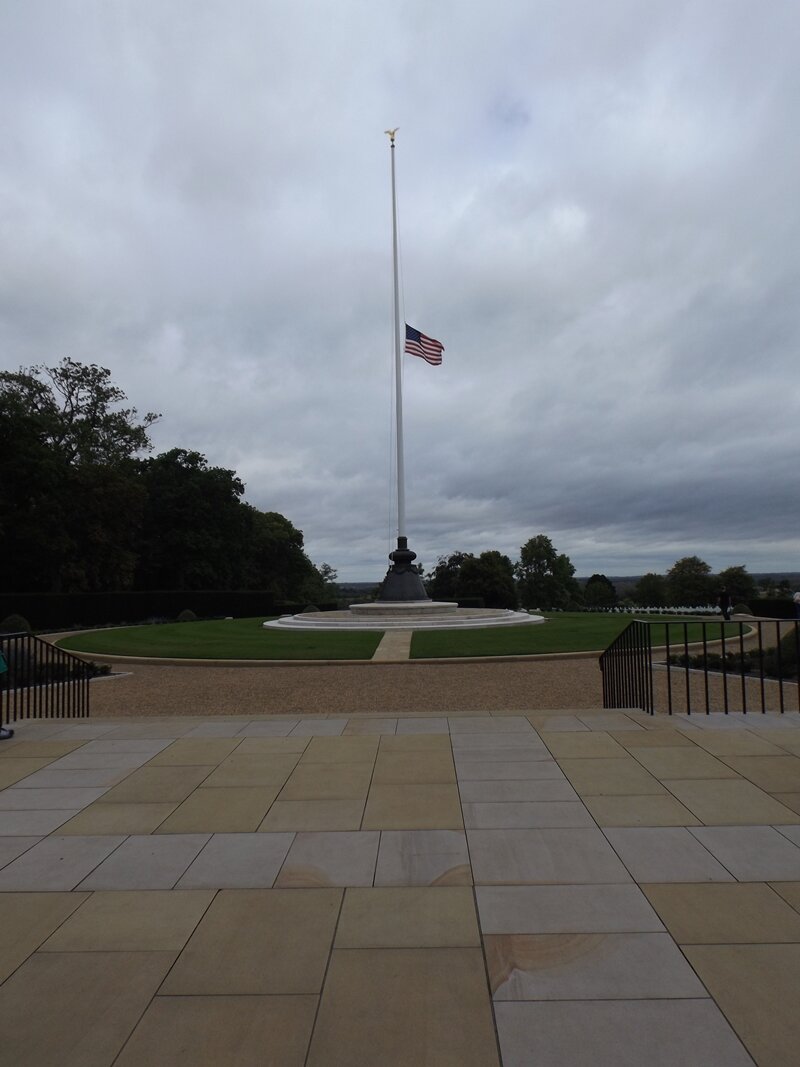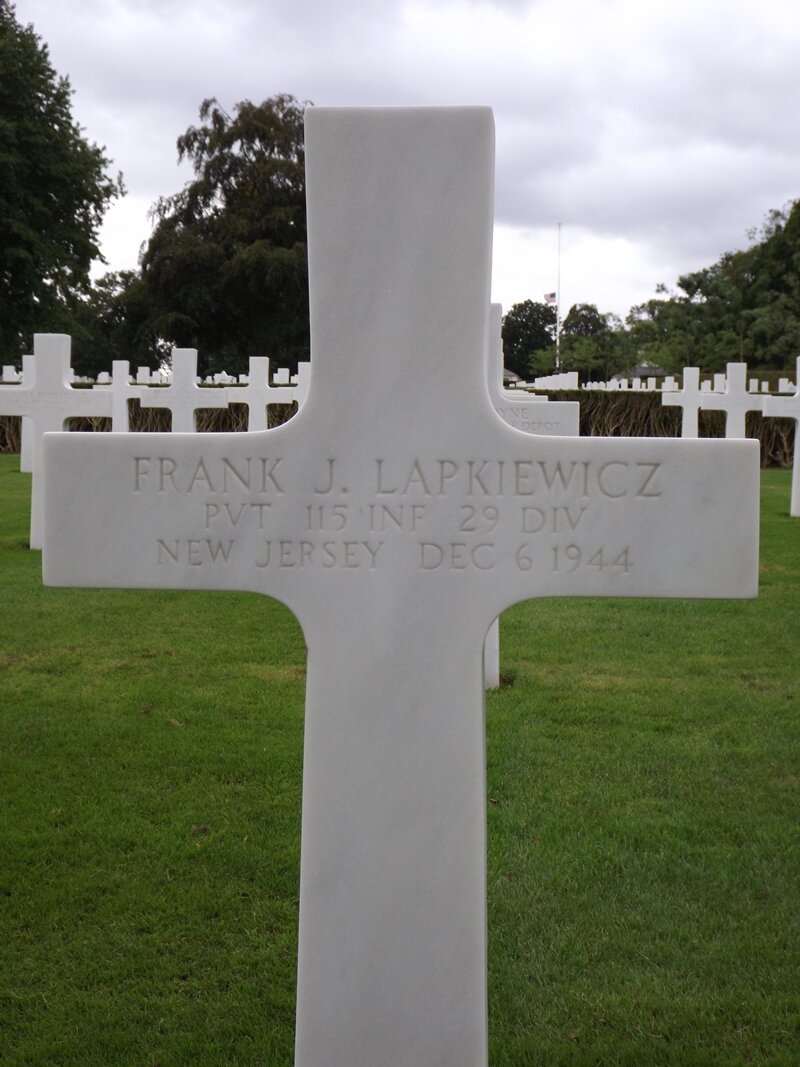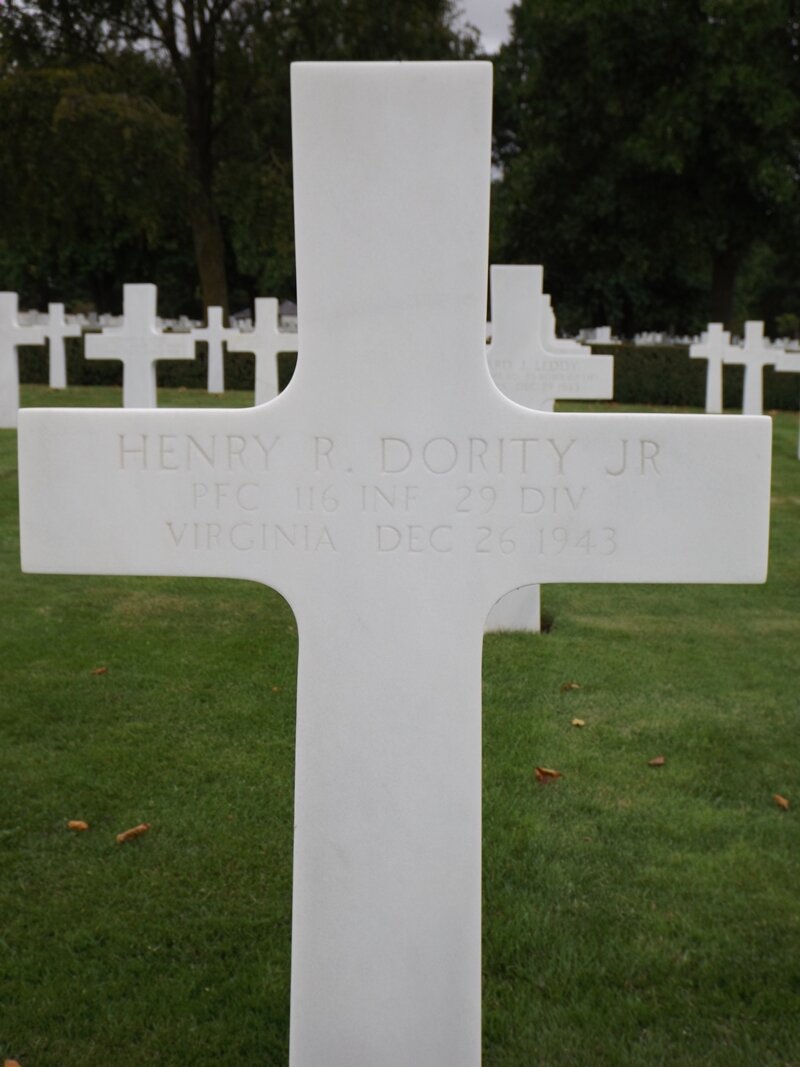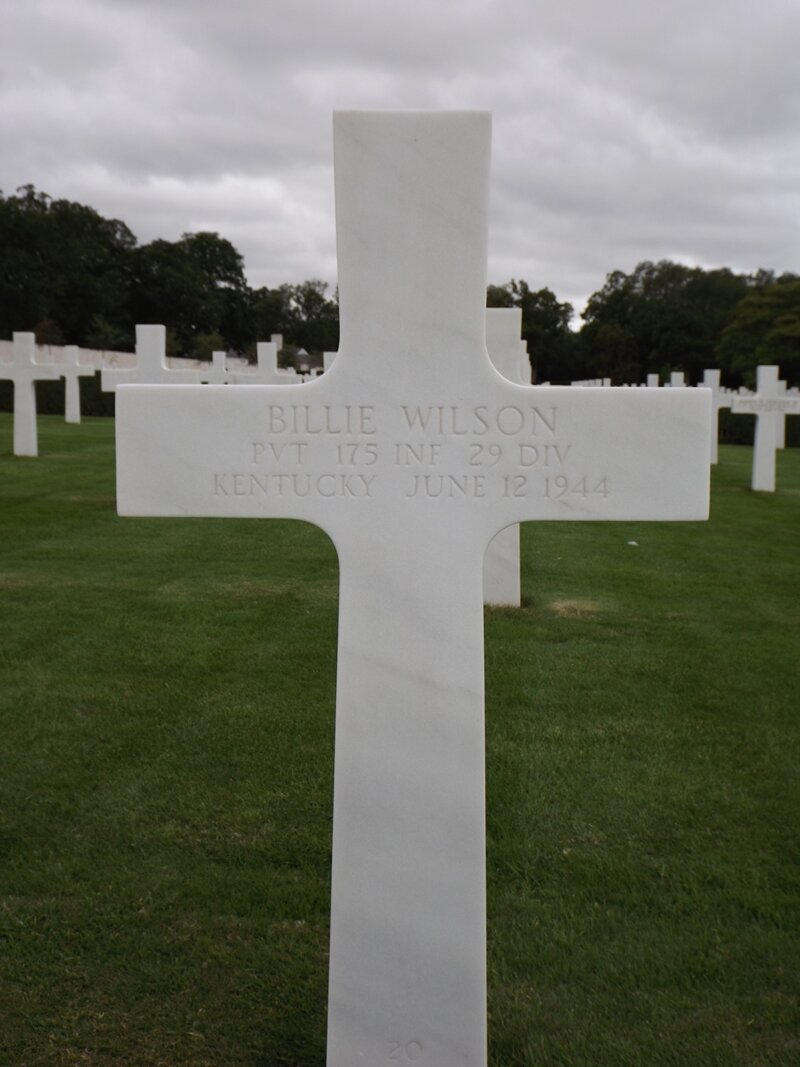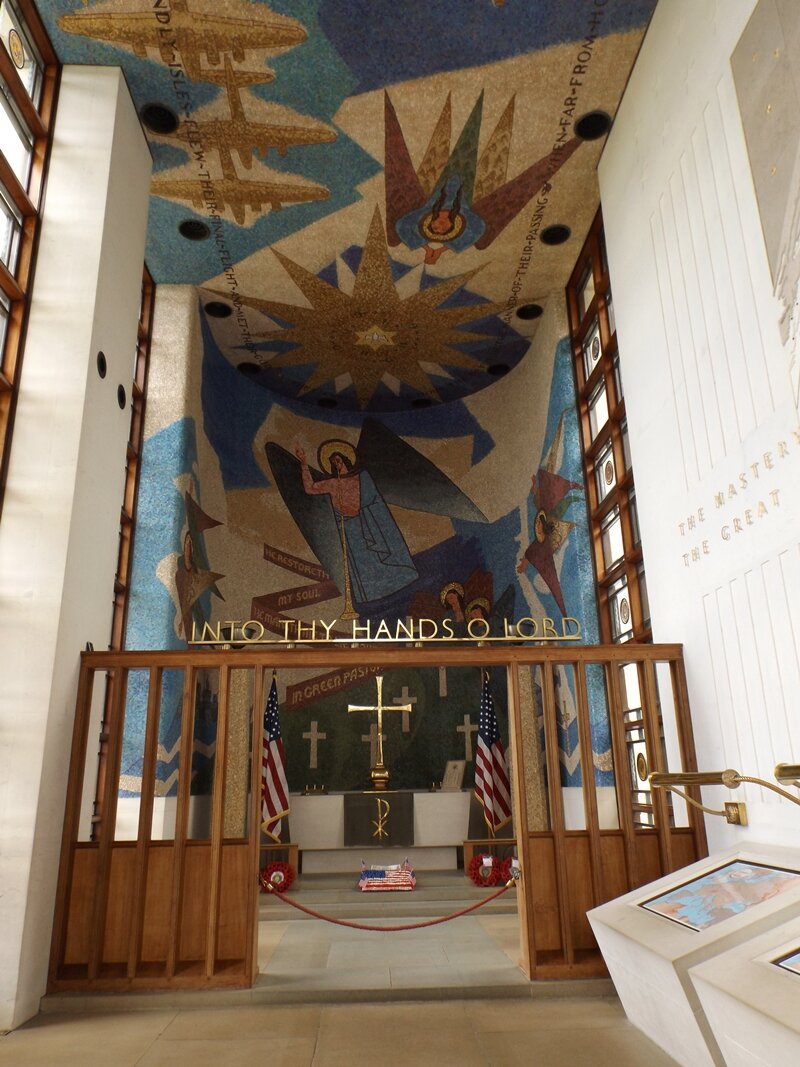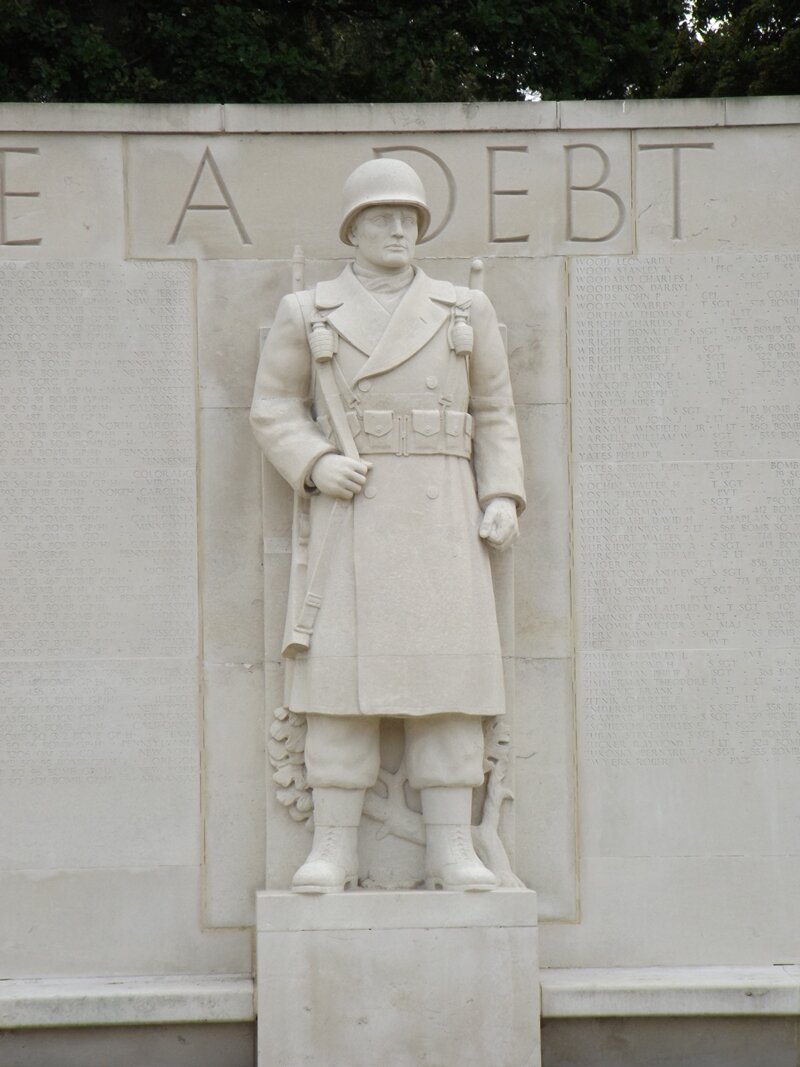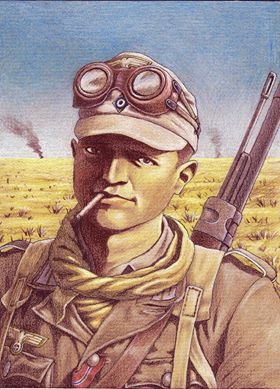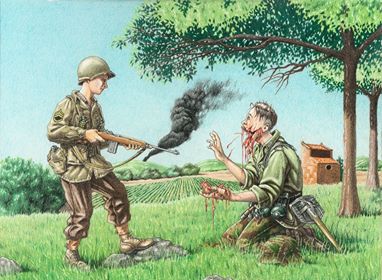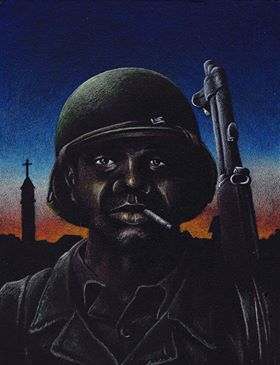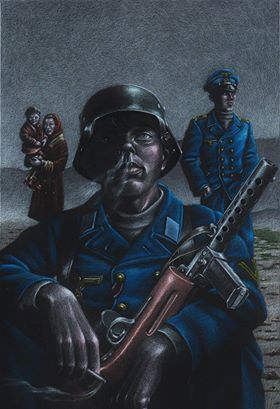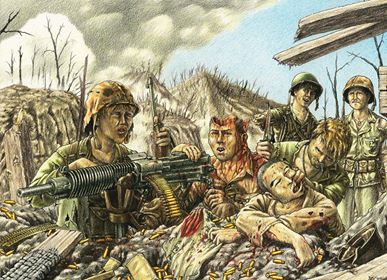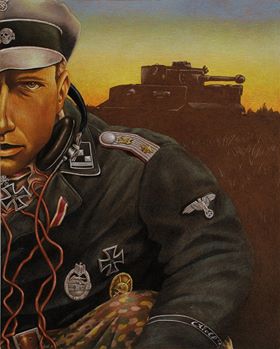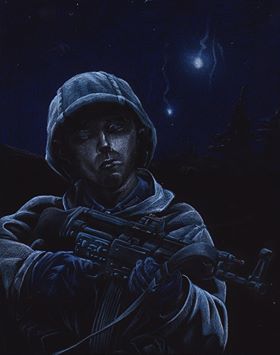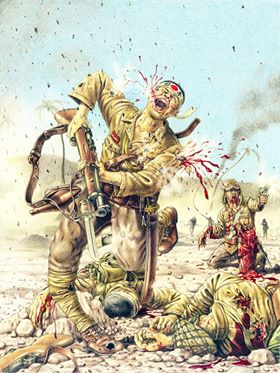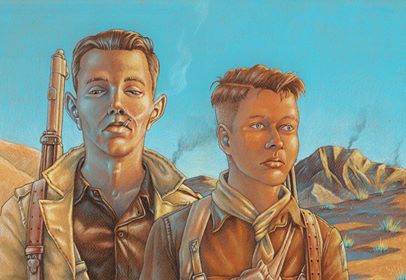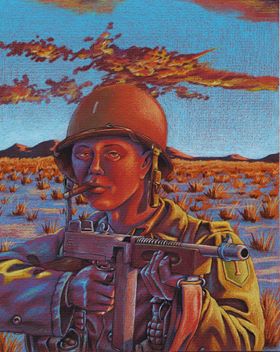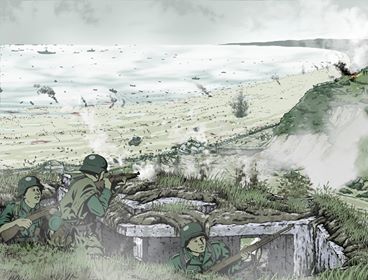
The Second World War resulted in the deaths of around 85 million people. Additionally, tens of millions more people were displaced. However, amid all the carnage people demonstrated remarkable courage, fortitude, compassion, mercy and sacrifice. We would like to honour and celebrate all of those people. In the War Years Blog, we examine the extraordinary experiences of individual service personnel. We also review military history books, events, and museums. And we look at the history of unique World War Two artefacts, medals, and anything else of interest.
Marketing The Tank Museum
The Tank Museum, situated in Bovington Camp, Dorset, is great example of how the modern museum must change to succeed. The Tank Museum’s marketing success has taken time and lots of moving parts. The engine of this growth and innovation has been the museum’s partnership with Wargaming.net, the award-winning developers of the massive multiplayer online game World of Tanks.
UK tourism is big business. According to VisitBritain.org nearly 4 million people currently work in the sector and it’s expected to generate £257.4 billion by 2025 (1). Thousands of attractions from castles and galleries to wildlife parks compete to attract domestic and overseas visitors. There are 2,500 museums alone in the UK (2). What is more, visitor expectations have grown exponentially. Visitors demand more bang for their buck, and will holler loudly on social media and review sites if they don’t get it.
Museum on a Mission
Today’s museums need clarity of purpose, specialist skills and marketing teams to win the war of visitor attraction. The Tank Museum, situated in Bovington Camp, Dorset, is great example of how the modern museum must change to succeed. The museum has a clearly stated purpose, "To tell the story of tanks and the people who serve with them (3)". Its mission can be summarised as “to conserve, develop and interpret the national collection of tanks and armoured fighting vehicles to educate and inspire people (4).”
The museum started out as little more than a shed that housed a small number of important military vehicles from the First World War. In 1947, the museum opened to the public. By 1981, it had around 120 armoured vehicles in its collection. The arrival of a new curator saw a period of expansion, as the museum refocused its efforts on vehicle restoration and conversation. In the noughties, a second period of expansion saw the restoration of Tiger 131, introduction of the annual Tankfest flagship event, an upgraded arena, new museum entrance, display hall and Vehicle Conversation Centre. Today, The Tank Museum holds the world’s largest collection of tanks, attracts over 200,000 visitors annually, and plays an important educational role (5).
Wargaming.net
The Tank Museum’s marketing success has taken time and lots of moving parts. The engine of this growth and innovation has been the museum’s partnership with Wargaming.net, the award-winning developers of the massive multiplayer online game World of Tanks. Since 2011, Wargaming.net has sponsored The Tank Museum’s main summer event, Tankfest. In 2013, they sponsored the creation of The Tank Museum’s state-of-the-art Education Centre. In 2014, Wargaming.net sponsored the ‘Fury’ exhibition, which celebrated the museum’s involvement in the making of David Ayer’s war movie (6).
At Tankfest 2015, Google partnered with Wargaming.net and The Tank Museum to create the UK’s first virtual reality (VR) military museum experience (7). In recent years, the museum’s Vehicle Conservation Centre has become the gaming hub of Tankfest with an array of activities that are streamed live across various platforms such as Facebook, Instagram and YouTube. Wargaming.net offers gamers special premium versions of classic tanks such as The Tank Museum’s ‘Fury’ Sherman for limited periods. Opened in April 2017, World of Tanks supported the Tiger Collection exhibition, which brought together every member of the Tiger tank family in one display for the first time. Wargaming.net also supplied a virtual reality Sturmtiger, when arrangements for the loan exhibit fell through (8). The company has also been instrumental in bringing guest vehicles, such as the Char B1 medium tank and “Bretagne” Panther, from the Musée des Blindés (French Tank Museum), to appear at Tankfest.
Meeting Audience Demand
In a survey by the American Alliance of Museums, millennials (those born between 1980s and early 2000s) said that traditional museums were “static places for exhibiting things”. The survey found that millennials want interactive, immersive and participatory activities from museums (9). Today, technology makes it possible to create these interactive, immersive experiences. However, most museums lack the funds and expertise to harness technology themselves. Instead, they need like-minded corporate partners and sponsors such as Wargaming.net and Google.
A New Reality
Sponsorship works best when the parties involved share similar values, target the same audiences and have closely aligned objectives. Wargaming.net have created a variety of educational activities, from dedicated websites, augmented and virtual reality experiences to education centres. One of the game developer’s stated aims is “to promote an interest in history and show that education can be an engaging and even enthralling experience.” The virtual recreation of the Sturmtiger for The Tank Museum’s Tiger Collection exhibition is just one example of how Wargaming.net is working with military museums across the world to create amazing, interactive “mixed reality” experiences. Together, institutions like The Tank Museum and companies like Wargaming.net are changing visitor experiences from something static and one-dimensional into something interactive and immersive. What’s more, the experience is no longer confined by geography, physical exhibition space or artefact availability. The digital world knows no bounds. Of course, the ability to create more engaging, memorable visitor experiences delivers commercial benefits for the museum and its sponsors from brand building and increased visitor numbers to selling more premium features on your game platform and merchandising. It’s a win-win for everyone.
Education
In 2017, 6,924 schoolchildren and accompanying adults visited The Tank Museum as part of formal education programmes, an increase of over 1,500 from the previous year. The museum runs activities and events that relate to science, technology, engineering, arts and maths (STEAM) for primary and secondary schools. It has also developed partnerships with a number of universities. The museum’s educational programmes help anchor the institution within the local community, engage with completely new audiences and preserve the history of armoured warfare for generations to come (10).
The Tiger Workhorse
Today, Tiger 131 is the world’s most famous tank. It is also The Tank Museum’s most popular exhibit. Captured in April 1943, Tiger 131 was inspected by King George VI and Winston Churchill before being shipped to the UK where it went on public display. Next, the tank was subjected to an extended period of testing and evaluation. In 1951, Tiger 131 was sent to The Tank Museum. After a long period as a static exhibit, restoration work started in 1990. By 2003, the tank had been returned to running order, making it the world’s only operational Tiger 1. In 2014, Tiger 131 featured in the Hollywood war movie ‘Fury’. The last time a genuine Tiger tank had appeared in a film was 1950. In 2017, Tiger 131 was centre of attention again when the museum opened its Tiger Collection exhibition. The tank has also appeared in a number of history documentaries. The Tank Museum now runs two dedicated Tiger Day events every year. In 2017, these events attracted 4,500 visitors to the museum. Regular ‘Ride the Tiger’ online auctions and raffle ticket sales generate much needed income for on-going preservation and maintenance work. Tiger 131 merchandising, from t-shirts and mugs to World of Tanks special packages, make sure the vehicle earns its keep (11).
Merchandising
Retail marketing and merchandising has an important role to play at The Tank Museum. Naturally, it encourages secondary spend, money generated over the price of museum entry. Retail marketing also improves the customer experience, increases perceived value and strengthens brand engagement. As part of the museum’s recent makeover, the restaurant, gift shop and product mix of souvenirs have been better aligned with the museum’s brand values, personality, narrative and visual identity.
The Tank Museum gift shop and online store offer a wide selection of branded merchandise from mugs, books, wall art and apparel to model kits (12). In partnership with a number of manufacturers, the museum has created unique souvenirs such as branded versions of the classic board games Monopoly and Cluedo. Shoppers can buy a wide selection of Tiger tank themed items such as Tiger 131 premium lager, COBI Tiger 131 model kits and a reproduction of the Tigerfibel, the original Tiger tank crewmember’s manual. The gift shop’s design, layout and choice of merchandise aims to surprise, delight and extend the visitor experience. The gift shop enables visitors to continue learning about the history of the various exhibits. It also creates an opportunity to transform the one-time visitor into a lifelong ‘Friend of the Museum’.
Overcoming Geography with Social Media
The Tank Museum is Dorset’s highest ranked visitor attraction on TripAdvisor and has won numerous tourism awards. However, the museum’s location in rural Dorset also poses a challenge. It takes the average visitor 2-hours to travel to the museum. To extend its reach and build lasting relationships, The Tank Museum has turned to social media platforms such as Facebook, Twitter and YouTube.
In 2017, the museum’s YouTube subscribers reached 100,000 with over 7 million views of its content. Today, the museum has over 208,000 subscribers with a view count of 32.5 million. YouTube is particularly effective at reaching young men aged between 15 and 25. Traditionally, this is a difficult demographic for organisations within the heritage community to attract. In 2017, The Tank Museum was the most ‘liked’ military museum in the world on Facebook with 300,000 followers. The total reach of the museum’s content through Facebook was over 37 million users for the year. The museum’s Facebook page also integrates with its online store and YouTube channel. Currently, the museum also has 26,500 Twitter followers (13).
According to the online traffic statistics from SimilarWeb, the museum’s website receives around 280,000 visitors annually. 83% of all traffic is direct or from search. Just 8.42% comes from social. However, it’s a different story when you look at the online store analytics. This site receives 100,000 visitors per year. 41% of the site traffic comes from referrals and 11.23% from social media with YouTube being the most effective (14). To increase engagement, promote learning and generate additional income, it makes sense for the museum to experiment and invest in social media. After all, people are naturally passionate about their hobbies and interests. Unlike many organisations, who fail to understand the basic premise of social media, the museum has found that ‘likes’, ‘follows’ and ‘views’ can translate into visitors, supporters and sales.
Clear-Sighted Strategy
Heritage and tourism are highly competitive markets. In order to compete, institutions like The Tank Museum must have clear-sighted, long-term commercial strategies that enable them to pursue their objectives. In order to remain relevant, museums must diversify, adapt and make the most of their assets. Back in 1998, The Tank Museum began to build the infrastructure it would need to succeed in the future. It has expanded its education programme, demonstrations and events. These activities have steadily increased visitor numbers from home and abroad. In order to attract a younger audience, the museum has established an extremely successful on-going partnership with online game developer, Wargaming.net. They have provided much needed funds and technical expertise to build a new Education Centre and pioneering virtual reality experiences. The museum has not been shy about sweating its assets. A restored Tiger 131 is forever in the spotlight. Finally, the museum has used the Internet and social media to overcome the challenge of its rural location to reach new demographics. According to the Charity Commission, The Tank Museum generated an income of £5.8 million in 2017 (15). This money will help ensure the story of the tank and people who serve with them continues to be told, now and in the future.
-END-
Sources:
1. Britain’s visitor economy facts, Visitbritain.org website: https://www.visitbritain.org/visitor-economy-facts
2. The Museum Association website https://www.museumsassociation.org
3. The Tank Museum Limited, Trustees' report and financial statements for the year ended 31 December 2017, Page 2.
4. The Tank Museum Limited, Trustees' report and financial statements for the year ended 31 December 2017, Page 2
5. The Tank Museum website, Museum History page, https://www.tankmuseum.org/about-us/history
6. Wargaming.net website news pages https://worldoftanks.com/en/news/press/wargaming-sponsor-education-center-tank-museum-bovington-england/ and The Tank Museum website news pages https://www.tankmuseum.org/year-news/bovnews53146
7. War History Online website, Wargaming Unveils its First Virtual Reality Tank Battle Reenactment, https://www.warhistoryonline.com/world-war-ii/wargaming-unveils-its-first-virtual-reality-tank-battle-reenactment.html
8. Deep South Media, Tank museum leads with world with augmented reality, Nik Wyness, Head of Marketing, The Tank Museum, webpage: https://www.deepsouthmedia.co.uk/8519-2/
9. American Association of Museums, Demographic Transformation and the Future of Museums report, Elizabeth E. Merritt, founding director. Download a PDF copy of the full report: https://www.aam-us.org/wp-content/uploads/2017/12/Demographic-Change-and-the-Future-of-Museums.pdf
10. The Tank Museum Limited, Trustees' report and financial statements for the year ended 31 December 2017, Page 5.
11. The Tiger Tank website https://blog.tiger-tank.com/
12. The Tank Museum’s online store: https://tankmuseumshop.org
13. The Tank Museum Limited, Trustees' report and financial statements for the year ended 31 December 2017, Page 5.
14. SimilarWeb provides a free online tool that generates real-time website traffic statistics.
15. The Tank Museum Limited, Data for financial year ending 31 December 2017, Charity Commission website: https://beta.charitycommission.gov.uk/charity-details/?regid=1102661&subid=0
Cambridge American Cemetery and Memorial
In this blog post, we visit the Cambridge American Cemetery and Memorial. The Cambridge American Cemetery and Memorial holds the graves of 3, 812 soldiers, sailors and airmen. Another 5, 127 souls are commemorated on the Tablets to the Missing. During a recent visit to the Cambridge American Cemetery and Memorial I came across the headstones of three members of the US 29th Infantry Division, and decided to investigate.
Known as the “Friendly Invasion”, 1.6 million American service personnel were stationed in the UK by 6 June 1944. Three months after D-Day, 1.2 million of those Americans had been committed to battle. Of course, Americans had been supporting Britain from the very start of the Second World War from the famous Eagle Squadrons to US Navy and Merchant Marine. The US Eighth Airforce bombed targets across Occupied Europe and Germany from August 1942 to May 1945. By the end of the conflict, over 3 million Americans had been sent to Britain. Regrettably, many ground, naval and air force personnel would never return home.
The American Battle Monuments Commission operates and maintains 26 American military cemeteries and 29 monuments across 16 countries. There are two American military cemeteries in the UK, situated in Cambridge and Surrey. The Cambridge American Cemetery and Memorial hold the graves of 3, 812 soldiers, sailors and airmen. Another 5, 127 souls are commemorated on the Tablets to the Missing.
During a recent visit to the Cambridge American Cemetery and Memorial, I came across three members of the US 29th Infantry Division. As an associate member of the 29th Division Association, I took photos of each headstone so that I could do a little research about these men. In the case of PFC. Henry R. Dority, Jr, 116th Infantry Regiment, 29th Infantry Division, it seems likely that he was killed in a training accident or succumbed to some sort of illness. The 116th Infantry Regiment had started amphibious assault training on the English coast by the date of this death, December 26th, 1943.
Henry R. Dority, Jr
YOB: 1920
Home: Halifax, VA
Occupation: Semi-Skilled Painter, Construction or Maintenance
Marital Status: Single with dependents
Enlisted: 3 February 1941
Service No: 20364712
Private First Class, 116th Infantry Regiment, 29th Infantry Division
DOD: 26 December 1943
Private Billie Wilson must have been badly wounded during the initial bitter fighting for the beachhead following the D-Day landings. Billie’s unit, Company L, 3rd Battalion, 175th Infantry, landed on Omaha Beach, Normandy, on 7 June 1944, D+1. Their landing was opposed. On 8 June, the 1st battalion passed through and captured La Cambe. However, the 2nd and 3rd Battalions were strafed by RAF Typhoon fighter-bombers with six men killed and 16 wounded. It is possible that Billie was wounded during the blue-on-blue attack by Allied planes. There was some opposition at the start of the push into Isigny. The operation did not start until dusk. Once again, it is possible that Billie was wounded and reported missing during the night advance on Isigny. The 3rd Battalion supported by tanks took Isigny only to find it abandoned by the Germans and set on fire by Allied bombing. We do know that Billie was seriously wounded, returned to the UK and subsequently died of his wounds on 12 June 1944. On 9 June, 175th pushed through Isigny and supported by tanks secured a bridge over the Vire River. The regiment then consolidated around Lison on the 9 and 10 June 1944.
Billie Wilson
YOB: 1923
Home: Kentucky
Occupation: General Farmer
Marital Status: Single
Enlisted: 1 June 1942
Service No: 15114820
Private, Company L, 3rd Battalion, 175th Infantry Regiment, 29th Infantry Division
Reported missing in action on 8 June; dropped rolls on 21 June
DOD: 12 June 1944
Awards: Purple Heart
Frank J. Lapkiewicz joined Company E, 115th Infantry Regiment on 4 September from the replacement depot as a Rifleman. On 16 September, Frank was listed as lightly injured in action (LIA) and moved to the hospital. In November 1944, the 29th Infantry Division began its drive to the Roer River, Germany, blasting its way through Siersdorf, Setterich, Durboslar, and Bettendorf, and reaching the Roer by the end of the month. Frank returned to duty on 14 November. The attack on Durboslar, preceded by an artillery barrage, started on 19 November. The 2nd Battalion, 115th Infantry advanced on the town supported by tanks and artillery. In response, the Germans brought up 12 self-propelled 88mm guns. Two Allied airstrikes helped to dislodge the German defenders. Small unit actions continued into the night and the 115th took a number of prisoners. At some point during the fighting on the 19, after just five days back in the line, Frank was seriously wounded. Frank was evacuated back to the UK but died of his wounds on 6 December 1944.
Frank J. Lapkiewicz
YOB: 1915
Home: 1111 Maple Street, Wilmington, Delaware
Parents: Leon & Nellie Lukiewska
Occupation: Skilled worker in manufacturing
Marital Status: Single
Enlisted: 28 February 1944
Service No: 42085191
Private, Company E, 2nd Battalion, 115th Infantry Regiment, 29th Infantry Division
Wounded during the battle for the German town of Durboslar
DOD: 6 December 1944 (Died of Wounds)
Awards: Purple Heart
In total, the Cambridge American Cemetery and Memorial contain the graves of around 45 members of the 29th Division’s three infantry regiments. The American Battle Monuments Commission keeps the cemetery in immaculate condition. The visitors centre and helpful staff ensure that the stories of service personnel such as Henry, Billie and Frank are preserved and their sacrifices remembered.
Donald A. McCarthy, A Veteran’s Story
In this post, we tell the story of D-Day veteran Donald A. McCarthy, who served with Headquarters Company, First Battalion, 116th Infantry Regiment, 29th Division, and landed on Omaha Beach.
In 1999, I was researching the D-Day landings for a radio project. As part of my research, I was lucky enough to start corresponding with 29er veteran, Donald A. McCarthy. Sadly, Donald passed away in 2017 at the grand age of 93. He lived a full and active life. He was rightly proud of his military service. He was Commander of the 29th Division Association from 1995-96 and made 14 trips back to the Normandy beaches and battlefields. In 2014, he was awarded the French Foreign Legion of Honour. As part of the 75th anniversary of D-Day and battle for Normandy, I thought it worth sharing Donald’s own experience of landing on Omaha Beach as he told it to me.
Training for D-Day
I was a member of Headquarters Company, First Battalion, 116th Infantry, 29th Division. I was drafted in July 1943 after graduating from High School. I completed basic infantry training in Alabama, shipped overseas on the Il de France, assigned to 1BN 116t RCT at Ivybridge, 26 January 1944. The RCT (Regimental Combat Team) began intensive training at the Assault Training Centre, Woolacombe Beach on the North West Coast of Devon, and later in April participated in Exercise Fox at Slapton Sands. We were fortunate to have preceded the horrible debacle of Exercise Tiger of 27th April.
Omaha Beach
Again, I was fortunate to have survived the landings of the third wave at Omaha Beach. Although the flotilla was originally scheduled for Dog Green sector of the beach, the British Coxswain and the entire flotilla of LCAs (Landing Craft Assault) from the SS Empire Javelin (Infantry Landing Ship, Large) were carried in an easterly direction by the tide toward the Dog Red sector and the Moulin Draw.
My LCA had taken on water, was swamped and sank about 200 yards from the low watermark and beach obstacles. Several of us swam in behind bodies and attempted to hide behind the obstacles from machine gun and artillery fire. Although the MG fire was intense, the Germans on the bluff were unable to see us because of smoke from burning grass and buildings blowing east from the Vierville (Vierville-sur-Mer) area. The smoke screen provided an opportunity to run from the water’s edge, and the fear of getting run down from incoming landing craft, and find protection from the high water shingle.
Evacuation
Some of us managed to crawl toward the Vierville Draw and were eventually able to move up the draw and reach our objective, the church in Vierville. We came under fire from our own navy and I was ordered to return to the beach and attempt to contact the US Navy beach master. I was hit by an overhead shell burst in my left leg after finding a radio. The radio caught the brunt of the burst and both my leg and the radio became inoperative. A medic dragged me to a makeshift slit trench near the shingle within 100 yards of the draw. The following morning hundreds of us managed to walk towards the Moulin Draw and most were evacuated on LSTs (Landing Ship, Tank) back to ports in Britain. Some of us recovered and returned to Normandy within three weeks.
Wounded Again
I was able to re-join my company by early July and participate in the battle for St. Lo and Vire. During the attack at Vire, I came under heavy fire in an abandoned garage. The roof collapsed and debris hit my hand and neck. I did not consider my wounds serious until a form of blood poisoning finished my days with the 116th in France.
After several weeks in a General Hospital at Great Malvern, I was assigned to an Infantry Training Centre at Tidworth Barracks. We ran a training facility for Air Force personnel and shipped them to Holland and Germany as infantrymen.
Home
I remained a PFC (Private First Class) throughout my time in the ETO (European Theatre of Operations). In January 1946, I returned home to Boston and enrolled in college. I got married and worked for Bell Systems for 30 years. My work with Bell Systems centred on defence telecommunications with the US Navy including a period in Vietnam between 1967 and 1968. After leaving Bell, I worked for the Chamber of Commerce in Providence, Rhode Island. In 1969, I returned to England, chartered a small sailboat at Gosport, and sailed to Omaha Beach to recapture the event that changed my life. Since then I have returned to Normandy to take part in D-Day anniversary events with many other 29ers.
-END-
Visit the 29th Division Association website to learn more about the unit’s contribution during World War Two. Additional material courtesy of US Department of Veteran Affairs and Back to Normandy website.
D-Day 75: Daks Over Duxford
Watch our highlights video of the IWM Duxford’s Daks Over Duxford event as part of the 75th-anniversary commemorations of the D-Day landing of June 6 1944. The largest collection of Douglas C-47 Skytrain and DC-3 aircraft since World War Two. Ten aircraft flew sticks of paratroops over to Normandy for a mass parachute drop. We have also published 57 photos from the Daks Over Duxford event.
As part of IWM’s D-Day 75th anniversary week, Daks over Duxford told the extraordinary story of D-Day, uniting the greatest number of Douglas C-47 Skytrain and Dakota aircraft in one location since the Second World War. Synonymous with the D-Day Landings, more than 30 'Daks' descended upon IWM Duxford.
Mass parachute jumps and flight displays took place across the museum ahead of the epic cross-channel flight to Normandy on 5 June. On the ground, D-Day-related displays and activities brought the extraordinary story of D-Day to life.
In fact, 21 DC-3s and Douglas C-47s finally went to Normandy, ten of the aircraft carrying sticks of paratroopers for a mass drop as part of the Daks Over Normandy commemorations across the Channel. In reality, 1200 Douglas C-47s were used for D-Day. As well as the Daks, a P-47 Thunderbolt, two Mk 9 Spitfires and two P-51 Mustangs performed aerial displays. There was also a very impressive flypast by a collection of USAF C-130s and V-22 Osprey modern aircraft.
DDay 75: Daks Over Duxford Photography
D-Day 75th Anniversary Commemoration
As part of the D-Day 75th-anniversary commemorations, The War Years will be adding a range of content over the coming week.
As part of the D-Day 75th-anniversary commemorations, The War Years will be adding a range of content over the coming week.
The Story of D-Day, Part One
The Plan
The largest amphibious operation in military history, code-named Overlord, D-Day started in the early hours of 6 June 1944. The objective was an 80 km stretch of the Normandy coastline. An armada of 7000 ships planned to land 175,000 men, 50,000 vehicles and all their equipment by day’s end. 11,000 aircraft, oil pipelines under the English Channel and even giant Mulberry Harbours would be towed across the sea.
Neptune
Operation Neptune was the naval element of the Overlord plan. 7,000 vessels from battleships to landing craft, Neptune was truly an allied effort. British, American, Canadian, French, Norwegian, Dutch, Polish and Greek vessels all played a part in enabling the landing’s success.
The Landings
The Allies planned to land on 5 beaches code-named Utah, Omaha, Gold, Juno and Sword. The flanks or sides of the planned beachhead would be secured by airborne forces dropped during the night and early morning on 5/6 June.
Pegasus Bridge
Strategically important, the bridges over the Caen Canal and Orne River had to be captured to enable Allied tanks to operate east of the river, and prevent German counter-attacks against the landings.
Seized by a daring glider assault the bridges were successfully captured by Major John Howard’s D Company, 2nd Battalion, Ox and Bucks Light Infantry at just after midnight, 6 June 1944. Once captured it was vital Major Howard’s men held the bridges against counter-attacks until relieved by Lord Lovat’s 1st Special Service Brigade at 1 pm.
Merville
In the area immediately east of Sword Beach, some 4,800 elite airborne troops landed by parachute and glider. Men of the 9th Parachute Battalion took the German coastal battery at Merville that threatened the British landing beaches.
US Paratroops
The American 82nd and 101st Airborne Divisions secured the flanks of the US beaches. However, the 6,600 men dropped were badly scattered that reducing their initial effectiveness, although this did confuse the German defenders. The paratroopers successfully secured the exits from Utah Beach and captured bridges en route to Carentan.
The Story of D-Day, part Two
The American Beaches
Utah Beach
The D-Day landings started at the low water mark on a rising tide at 06.30hrs in the US sector and 07.30hrs for the British.
Strong coastal currents and obscuration of landmarks due to smoke from naval bombardment meant American invasion forces landed 2,000 yards south of their planned objective on Utah Beach. Luckily the area where troops from the 4th Infantry Division actually landed was less heavily defended, and casualties were mercifully light.
Pointe du Hoc
Just as Pegasus Bridge was vital to the success of the British landings so Pointe du Hoc was important to the Americans. Intelligence reports prior to the landings indicated that six 155mm guns in concrete emplacements sat atop a 177ft cliff. The guns threatened the landings on Utah and Omaha Beaches and had to be destroyed.
The elite 2nd Ranger Battalion was tasked with destroying the guns at Pointe du Hoc by direct assault from the sea, which meant scaling the cliffs while under fire. However, when the Rangers fought their way up to the gun emplacements they found them empty. The guns had been moved inland. Later, the guns were found and destroyed.
Omaha Beach
The most difficult terrain and heavily defended sector, Omaha Beach was the objective of the US 1st and 29th Infantry Divisions. At 5.40 am amphibious DD tanks launched 6,000 yards offshore, nearly all sinking in the heavy seas.
Only 5 tanks made it ashore to support the infantry landings. All but one of the 105mm field artillery guns also vital to the landings were lost. To make matters even worse, the naval and air bombardment had done little to reduce the German defensive positions commanding the exposed beach.
Seasick, heavily laden, troops of the nine companies in the first assault wave were decimated by German machine-gun, mortar and artillery fire. Those troops lucky enough to make it across the open beach took cover behind the sea wall.
The assault on Omaha initially stalled. However, gradually men formed small groups and started fighting their way up the bluffs that overlooked the beach. Later, navy destroyers came dangerously close to shore to give much-needed fire support. By day’s end, Omaha Beach was in American hands.
Brigadier General Norman “Dutch” Cota, several NCOs and Privates received decorations for gallantry during the action at "Bloody Omaha".
Today, 3 June 2019, we post a short video taken back in June 2010 on a visit to Omaha Beach and the American Cemetery and Memorial.
The Story of D-Day, part Three
The British, French and Canadian Beaches
Gold Beach
Westernmost of the British/Canadian beaches, code-named Gold, were assaulted by the 50th Division of the British XXX Corps. Specially developed armoured vehicles were landed ahead of the infantry to deal with beach obstacles, mines and the sea wall. Some 2,500 obstacles and mines needed to be cleared from Gold Beach alone. Allied forces quickly overcame German defences and moved inland.
During the advance of the 69th Brigade, Company Sergeant Major, Stan Hollis of the Green Howards won the Victoria Cross, for repeated acts of valour, Britain’s highest military honour. This was the only VC won on D-Day.
Juno Beach
Canada made a terrific contribution to the Allied war effort. Juno Beach was assigned to the Canadian 3rd Division. Like the British, the Canadians used special armoured vehicles to help overcome beach obstacles, mines and strong points. These vehicles were nick-named Hobart’s “funnies” after their creator Major General Sir Percy Hobart.
The town of Courseulles was strongly defended by the Germans but duly taken. The Queens Own Rifles suffered severe casualties crossing the beach at Bernieres. The Canadians made contact with 50th Division on their right by day’s end.
Sword Beach
The easternmost landing zone, Sword Beach, was assaulted by the British 3rd Division. The 3rd Division’s objectives were perhaps the most ambitious of the D-Day operation: capture or mask the Norman city of Caen by nightfall. The 3rd Division also knew it was likely to be counter-attacked by tanks of the German 21st Panzer (Armour) Division.
British intentions to quickly move off Sword Beach and drive inland were held up by resistance from German strong points. British troops reached Lebisey Wood, just three miles short of Caen, but could advance no further.
Special Forces - The Commandos
French Commandos led by Philippe Kieffer took Ouistreham casino and secured the canal gateway. However, the French suffered heavy casualties and Kieffer was wounded twice during the fighting.
Commandos of the 1st Special Service Brigade landed on the 'Queen Red' sector of Sword Beach at approximately 8.40 am, 6 June 1944. Commanded by Brigadier Simon Fraser, Lord Lovat, the 1st Special Service Brigade’s mission was to push inland and link up with the lightly armed British 6th Airborne Division holding Pegasus Bridge and bridge over the Orne River.
Today, we have added 241 photos to our Flickr site taken during visits to the D-Day beaches, Pegasus Bridge Memorial and Museum, Normandy American Cemetery and Memorial, Omaha Beach Memorial Museum, Airborne Museum, Sainte-Marie-du-Mont and Sainte-Mère-Église in 2010 and 2014.
WW2 Artwork of Michael Akkerman
In this blog post, we showcase the emotive, World War Two-inspired artwork of Michael Akkerman from the famous faces of Audie Murphy and Eugene Sledge to the bloody realities of the battlefield.
Michael Akkerman is an American artist whose work is heavily influenced by World War Two (WW2) military history. Michael has kindly allowed The War Years to show some of his work here. Probably the most recognised subject of Michael’s work is Hollywood legend, Audie Murphy. He was one of the most decorated American soldiers of WW2, winning the Medal of Honor aged 19. After the war, Murphy had a successful acting career, as a songwriter and horse breeder. Sadly, he was killed in a plane crash in 1971. He was only 45 years old. One of Michael’s pictures is inspired by an episode taken from Murphy’s wartime autobiography, where he felt compelled to shoot a badly wounded young German soldier as an act of mercy.
Eugene Sledge is another name that will be familiar to many people with a passing interest in the Second World War. He served in the US 5th Marines, 1st Marine Division fighting in the Pacific. His book, ‘With the Old Breed: At Peleliu and Okinawa’ became a bestseller when published in the 1980s. His book and Robert Leckie’s ‘Helmet for My Pillow’, also served as inspiration for the HBO miniseries The Pacific. The savage, relentless fighting of the Pacific campaign had a dehumanising effect on many of the combatants. However, somehow, Eugene Sledge was able to hold onto his humanity amidst the horror, which is vividly illustrated in Michael Akkerman’s artwork.
Made famous by Nazi propaganda and a legend by the battle of Villers-Bocage, Michael Wittmann was a German tank ace with an impressive tally of 138 kills, mainly achieved on the Russian Front. He is also the subject of one of Michael Akkerman’s paintings. A week after the D-Day landings, SS-Hauptsturmführer Wittmann and his Tiger tank bumped into the forward elements of the British 7th Armoured Division. Wittmann attacked the British column and destroyed 14 tanks, 15 personnel carriers and two anti-tank guns in an engagement that lasted about 15 minutes. Wittmann was awarded the Knight's Cross with Oak Leaves and Swords and became a propaganda star. However, he would be killed just two months later. His remains would not be found and positively identified until 1983.
As well as the famous and infamous, Michael Akkerman’s paintings capture some of the more mundane and human elements of the Second World War, from the black ‘Buffalo Soldiers’ of the US Army to the hardships of the North Africa campaign. He also depicts the bloody realities of the Japanese Banzai charge and the lethal efficiency of the German MG-42 machine guns used to defend Omaha Beach on D-Day. To learn more about Michael’s artwork or to get a quote for a commission, you can find him on Facebook.






